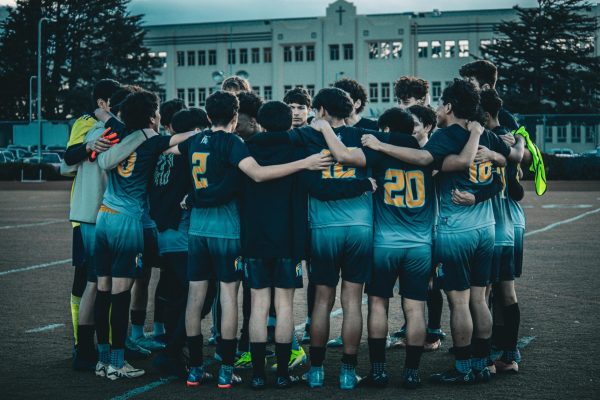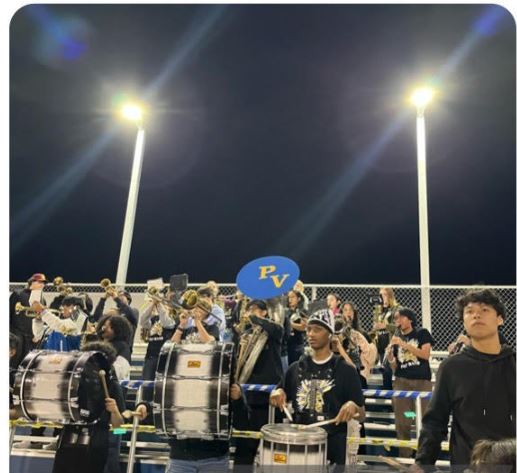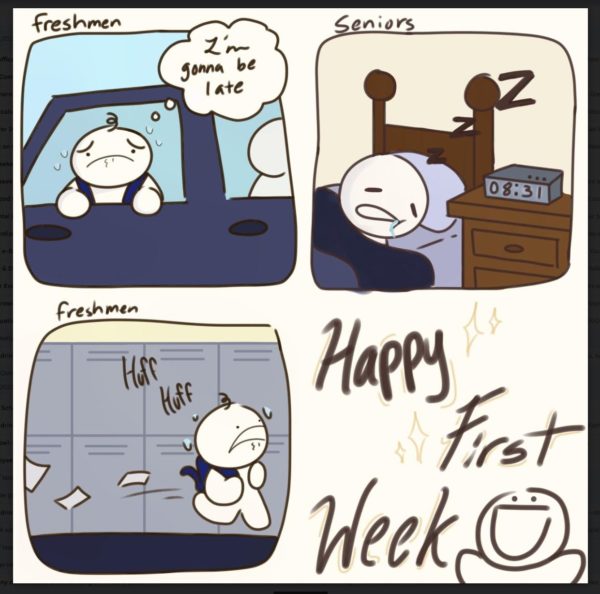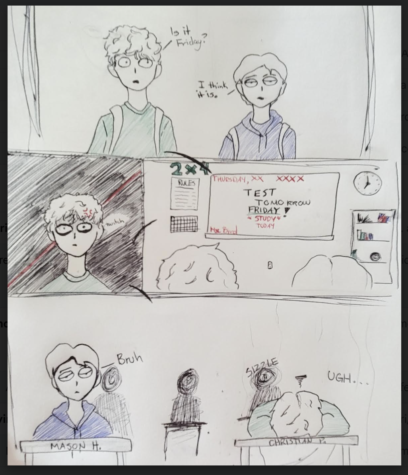I Don’t Know, Can You?
October 12, 2022
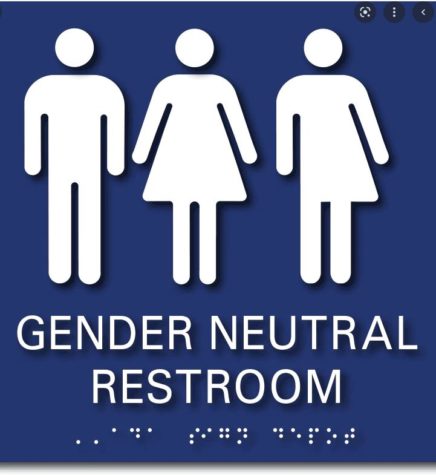
I’ve never been particularly fond of using public restrooms, especially in school settings. Arguably, they are no different from a regular public restroom in terms of smelling like nicotine and having people not know how to flush a toilet. However, because of my gender identity, I find them uncomfortable for an entirely different reason.
As someone who is gender non-conforming, I am stuck with a choice. Either I tough it out and use the restroom that correlates to the gender I was assigned at birth, or I ask somebody who I have never talked to before and ask them to unlock the restroom for me. The need to make this decision alone goes to show that we lack accommodations for those who identify differently in regards to gender.
The feeling of distress and discomfort, when put into certain situations that relate back to one’s gender identity, referred to as gender dysphoria, is common among those in the transgender and gender non-conforming community. For many of those in the previously stated communities, restrooms are a huge source of gender dysphoria. It’s as though all eyes are on you, even if you happen to be alone.
The idea of gender-segregated bathrooms has been around for just about 300 years, but in the United States, it was only ever put into place in the late 1800s. The fact that the concept of separating bathrooms by gender has been around for a little over 100 years is baffling. Even now, with unisex bathrooms having only been introduced in 2016, it makes this point even more surprising. Not only were unspecified bathrooms a normal thing before then, but it’s taken so much time just to put this idea back into place.
As I’ve previously stated, I am a gender non-conforming person, so going into the women’s restroom is an uncomfortable thing for me. Even though I’m completely comfortable and confident with the way I identify, I still can’t ever see myself going up to a staff member at my school, somebody who I’ve never interacted with before, just to ask for them to let me use a bathroom that makes me comfortable. Not only would I essentially be coming out to a stranger, but who’s to say they wouldn’t say “no”? The only private bathrooms available are the teacher’s restrooms, and according to OSHA’s regulations, teachers and students are not permitted to use the same restrooms. This is understandable, seeing as it poses a safety hazard. However, this just proves further how wrong this picture looks.
If the only unisex restrooms on campus are not accessable to their gender non-conforming and / or transgender attendees, then where are they to go? They’re forced to go into restrooms where they feel uncomfortable. If they have a problem with it, then they have to come out to someone they don’t know. Many are not willing to take that risk.
However, let’s say there were unisex bathrooms installed. If this were the case and anyone could use these restrooms because they felt uncomfortable in the gender-specific restrooms, this poses a new issue. Who’s to say anyone wouldn’t use these bathrooms, even if they felt comfortable in gender-specific restrooms? People will violate and misuse the restrooms, seeing how far they can push before it’s taken away from them. Then, when this type of behavior is seen, that privilege is revoked. Now you have no unisex bathrooms, transgender and non-conforming students are uncomfortable yet again, and the problem comes back into play. This cycle repeats endlessly unless something is done to eliminate all other variables.
As amazing as it would be to have unisex bathrooms, a place where these communities can feel comfortable and safe, it’s likely not to happen unless something is done about it. While most would love to see these types of accommodations being made as a step in the right direction, who’s to say when or if it will ever happen? These problems aren’t just in schools, but all over the world. Public spaces, private spaces, jobs, etc. have these types of issues that are never covered unless somebody in these communities becomes targeted. They wait until everything goes wrong to try to fix these issues. So what’ll be the turning point?
WORKS CITED
Avery, Dan. “LGBTQ rights fight reignited 4 years after N.C.’s ‘bathroom bill’ controversy.” NBC News, 8 Dec. 2020
“AB-1732 Single-user restrooms.” California Legislative Information, 29 Sept. 2016.
“FAQ: The Gender Nondiscrimination Act.” Transgender Law Center, 17 Sept. 2016.
“Access to toilet facilities.” United Federation of Teachers, 2 Nov. 2019.
Rhodan, Maya. “Why Do We Have Men’s and Women’s Bathrooms Anyway?.” TIME, 16 May 2016



